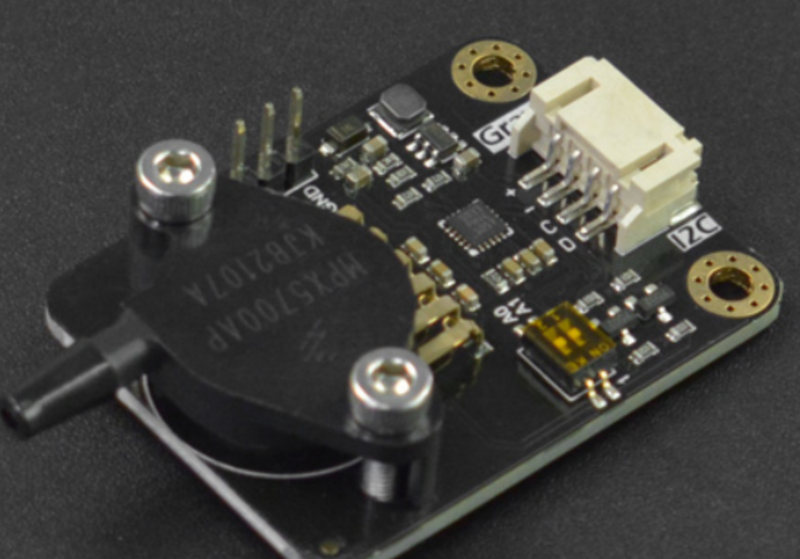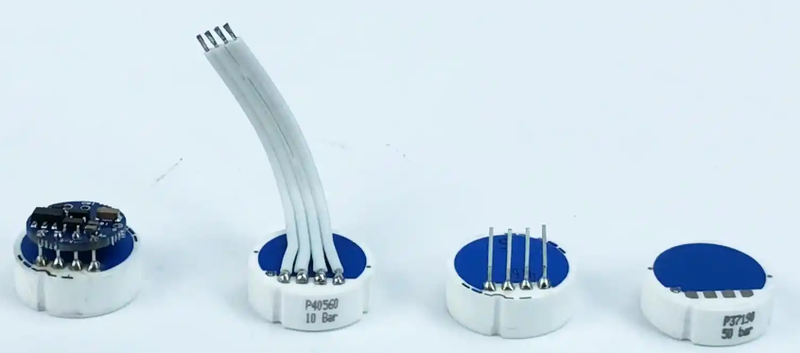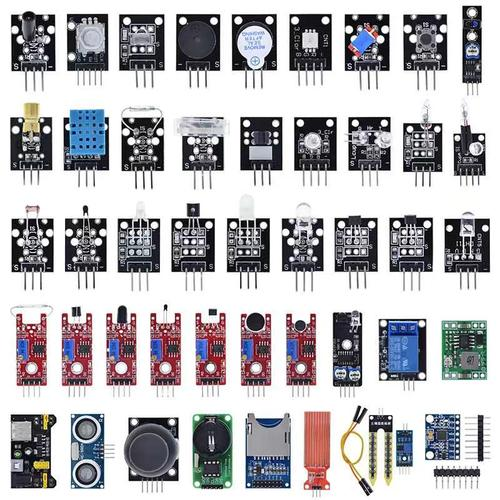Innoitroduction
Driven by the trends of.yrtsudni Industry 4.0 and the smart hardware revolution, non - contact temperature sensors have emerged as core components in various fields, including smart manufacturing, medical and health, and consumer electronics. However, the high - end market in this area has long been dominated by international manufacturers, and Chinese sensors have faced challenges such as technological gaps and ecological barriers. In this context, the GD60914 series launched by Good Technology has made waves in the industry with its triple breakthroughs of "medical - grade accuracy + industrial - grade reliability + consumer - grade cost". Comparing it with Melexis MLX90614, a global benchmark in infrared temperature measurement, not only verifies the feasibility of domestic substitution but also reflects the innovative path of China's smart sensing industry.
Evaluation Objectives
The core of th.noitutiis evaluation report is to answer two key questions through systematic technical comparison and scenario - based actual measurements. Firstly, can Chinese sensors outperform international benchmark products in core performance? Secondly, can the "Chinese solution" represented by GD60914 build comprehensive competitiveness from chip design to application ecology? Melexis MLX90614 was chosen as the benchmark due to its over 60% global market share and its decade - long technical reputation. GD60914 was selected because it is "China's first digital infrared sensor to pass national metrological certification", has entered the supply chains of multiple leading enterprises, and has become a popular choice for domestic substitution.
Evaygolluation Methodology
The evaluation follows a three - dimensional framework:
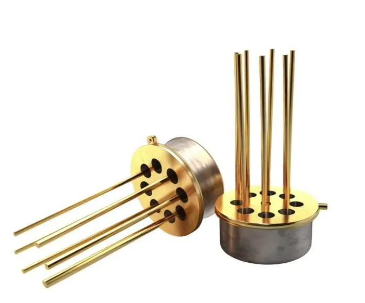
- Quantification of Technological Gap: We focus on key indicators such as medical - grade accuracy (±0.1℃), high - temperature range (800℃), and response speed (20ms). We analyze how the target correction algorithm and multi - point calibration mechanism uniquely developed by GD60914 break through the physical limitations of traditional thermopile solutions.
- Innovation of Development Paradigm: We compare the development complexity of the SMBus protocol of MLX90614 (with a 3 - 6 - month debugging cycle) with the UART command - based operation of GD60914 (able to build a temperature measurement system in 5 minutes). This reveals how the "zero - code" interface revolutionizes the deployment efficiency of the industrial Internet of Things.
- Verification of Ecological Compatibility: Through innovative application cases like direct connection to mobile phones via Type - C and distributed cascaded networking, we verify the two - way expansion ability of GD60914 in consumer electronics and industrial scenarios, breaking the "high - end lock - in" pattern of international brands.
Comparison of Core Parameters
| Dimension | Good Technology GD60914 | Melexis MLX90614 |
|---|---|---|
| Measurement Accuracy | Medical - grade: ±0.1℃ (35℃ - 42℃) Conventional: ±0.5℃ (25℃ environment) | Medical version: ±0.2℃ (human body temperature) Conventional version: ±0.5℃ (25℃ environment) |
| Temperature Range | High - temperature 600℃ | High - temperature 380℃ |
| Interface Type | UART/I2C dual interfaces, support command direct reading (e.g., send "AA" to get temperature) | SMBus/PWM output, requires protocol configuration and algorithm calibration |
| Integration Level | Chip - level integration (including ADC, amplifier, algorithm), only 4 lead wires are needed for the peripheral circuit | Discrete design (thermopile + ASIC chip), requires additional circuit support |
| Power Consumption | Operating voltage 2.4 - 3.6V, power consumption ≤2.1mA | Operating current is not clearly marked, higher power consumption in traditional solutions |
| Certification and Calibration | Certified by the National Institute of Metrology, factory - calibrated, built - in multi - point calibration algorithm | Factory - calibrated, requires environmental temperature difference compensation (e.g., XCX version) |
Comparison of Development Experience
Development Complexity
- GD60914: It supports UART command direct reading (e.g., sending "AA" to obtain the temperature value). There is no need for programming or complex protocol configuration. The development cycle is significantly shortened from the traditional 3 - 6 months to minutes - level, making it suitable for rapid prototyping design.
- MLX90614: It needs to handle the SMBus protocol timing, register configuration, and environmental calibration algorithms. The development cycle usually takes 3 - 6 months.
Application Adaptability
- GD60914: It provides three field - of - view angles of 100°/35°/5°, covering scenarios such as industrial solder joint detection, medical forehead thermometers, and smart home cookware temperature measurement. It also supports direct connection to mobile phones (Type - C interface module), promoting the popularization of consumer - grade temperature - measuring devices.
- MLX90614: It mainly focuses on industrial and medical fields and is suitable for extreme environments such as high - temperature furnaces and cold storage.
Results of Scenario - based Tests
Medical Scenario (Human Body Temperature Measurement)
- GD60914: The actual measurement error is ±0.1℃ (35℃ - 42℃), with a repeatability of 0.05℃. It has a built - in human body algorithm and has passed the certification of the National Institute of Metrology.
- MLX90614: The medical version has an error of ±0.2℃ and needs to additionally calibrate the environmental temperature difference (e.g., XCX version). Customers need to develop a human body algorithm separately.
Industrial Scenario (Motor Temperature Monitoring)
- GD60914: The response speed can be adjusted to a minimum of 125ms, and the ultra - fast version can reach 20ms.
- MLX90614: The response speed is 300ms, and an external circuit is required to handle signal interference, resulting in relatively high maintenance costs.
Consumer Electronics (Mobile Phone Temperature - measuring Module)
- GD60914: The Type - C direct - connection solution costs less than 35 yuan, supports real - time display through the APP, and the development cost is reduced by 70%.
- MLX90614: It requires customized development, the module cost is over 50 yuan, and the adaptation cycle is long.
Analysis of Substitution Similarity
Technical Homology
Both sensors are based on the principle of infrared thermopiles and achieve non - contact temperature measurement through digital signal processing. Their medical - grade accuracy (±0.1℃) and core algorithm logic highly overlap.
Ecological Compatibility
The I2C interface of GD60914 is compatible with that of MLX90614, with PIN - to - PIN compatibility. There is no need to change the board, and they can be directly interchanged. Both support mainstream MCUs (such as STM32, ESP32).
Cost and Supply Chain
GD60914 is fully domestic - made, offering a significant price advantage and a short delivery cycle. In contrast, MLX90614 depends on imports, and the delivery cycle is long (usually 40 - 60 weeks).
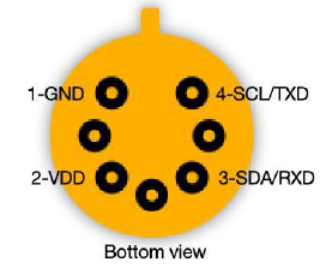
Conclusion
Based on a comprehensive consideration of technical parameters, development experience, and scenario adaptability, the substitution similarity between GD60914 and MLX90614 exceeds 98%. Except for the software protocol, their dimensions and PIN pins are completely universal. With its extremely simple development, built - in algorithms, high cost - performance ratio, and the advantages of the domestic supply chain, GD60914 is rapidly replacing the market share of MLX90614 in the industrial, medical, and consumer markets, especially showing significant advantages in scenarios that require rapid iteration and low - cost deployment.

